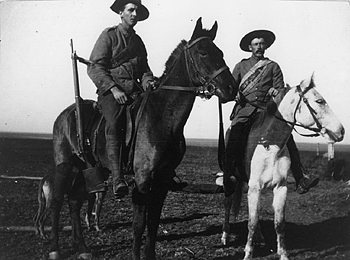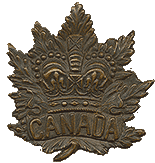Units
The South African Constabulary

British planning for the postwar period included a para-military force to police the conquered Boer republics. This resulted in the creation of the South African Constabulary (SAC). In August 1900, two months after the fall of Pretoria, Major-General Robert Baden-Powell, famous as the leader of the besieged garrison of Mafeking, was appointed to raise and command the new force. In retrospect, British hopes that the 8,500-strong constabulary could assume responsibility for pacifying the countryside were hopelessly optimistic. The Boers continued to fight on following the capture of their capitals, contrary to the expectations of the British high command.
Baden-Powell had been impressed with the Canadians, especially "C" Battery, with which he had served at Mafeking, and he expressed a desire to 'get as many of the Canadians in his force as possible'. While some members of the first and second contingents did transfer to the SAC, the bulk of the Canadians that served in the force - 30 officers and 1,208 other ranks - were enlisted in Canada in early 1901. Nearly three-quarters of the Canadian officers, and 100 of the men, had previous service in South Africa. Some members of later Canadian contingents also joined the force rather than return to Canada at the war's end.
Among the Canadian members of the SAC was the legendary Colonel Sam Steele, who had already commanded Strathcona's Horse. He would spend five years in South Africa, returning to Canada in 1906. Many of the Canadians believed they would serve together under Canadian officers. This was not the case, however, and the British broke up the Canadian contingent, an act which led to some disciplinary problems.
The SAC was a military organization disguised as a police force. Nevertheless, the British Army did not recognize it as a full partner in the war, despite the fact the SAC took part in many campaigns and experienced some hard fighting, as attested to by its casualty records and the list of honours and awards won by its members. At least 57 Canadians died and six won decorations while serving in its ranks.
